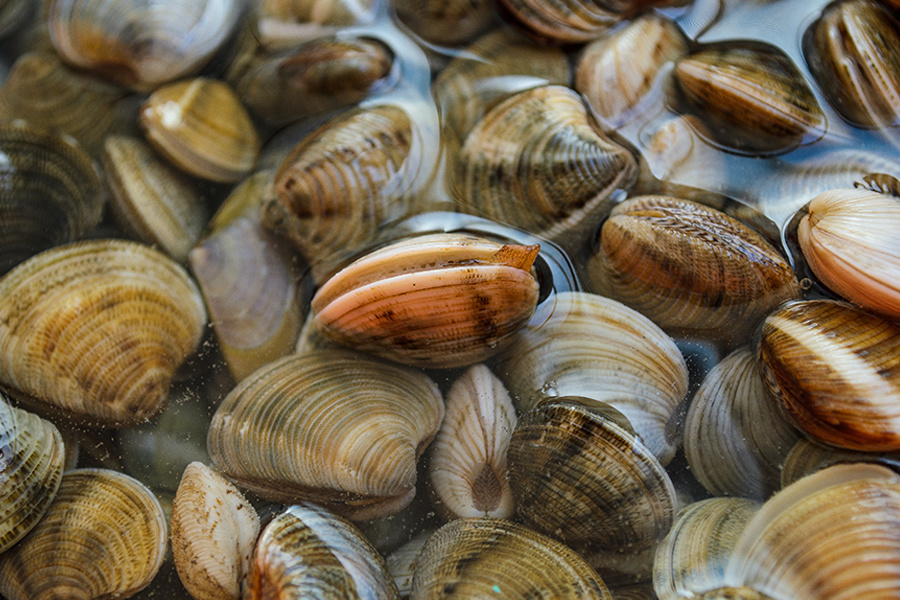East Coast surf clams – and the industry that relies upon them – look to be successfully adapting to rising ocean temperatures as clam larvae survive in newly hospitable waters, according to a newly published study.
Drawing on three decades of surf clam stock survey data, professors Jeremy Timbs and Eric Powell of the University of Southern Mississippi and Roger Mann of the Virginia Institute of Marine Science found the shellfish are effectively shifting their range.
“For a sedentary species, surf clams are remarkably adaptable to ocean changes that would cause problems for other shellfish,” said Powell.
The key to making that shift is the massive volume of larvae that surf clams produce, according to the study published in the Marine Ecology Progress series. Most of the larvae are eaten by predators, die from lack of food or temperature extremes.

The surf clam industry got its start in New Jersey and much of the industry is based there, like the clamming vessel Michael Jr. LaMonica Fine Foods photo
But as the higher end of the temperature scale rises in the south of the range, bottom temperatures to the north and east are warming and more larvae can survive there. In effect, the population shift is like a slow-motion roll, with clam numbers declining as the southern edge retreats, and advancing into waters that used to be too cold.
The findings confirm what the surf clam industry has been seeing since the late 1990s, as surf clam beds off Virginia and the Delmarva peninsula began to thin out. The epicenter of the surf clam fleet and its shore side processing infrastructure remains in New Jersey and other Mid-Atlantic locations. But like the clams, the industry has gradually begun looking northward, with a growing presence in New Bedford, Mass.
The researchers used a species distribution function model to corroborate findings of declining patchiness over time, supporting their hypothesis that warming of Mid-Atlantic continental shelf bottom waters is both driving surf clams into new habitat, as they declined in the Mid-Atlantic nearshore and southern areas.
Their analysis of clam sizes and trends over time suggest that larvae settlement in expanding areas is followed by growing clam mortality in areas where temperatures are rising. The surf clam population of larger, older animals grows more patchy, “but also predisposes the species to a rapid range shift,” the authors note.
The study was funded through the Science Center for Marine Fisheries (SCeMFiS). A collaborative project funded through a National Science Foundation grant and support from the fishing industry, SCeMFiS funds research around pressing scientific issues identified by industry partners.
SCeMFiS develops methods, analytical and survey tools, datasets, and analytical approaches to improve sustainability of fisheries and reduce uncertainty in biomass estimates. The University of Southern Mississippi is the lead institution, providing academic facilities along with the Virginia Institute of Marine Science at William & Mary. Scientists collaborating on those studies work at other institutions including Old Dominion University, Rutgers University, University of Massachusetts-Dartmouth, University of Maryland, and University of Washington.
“Studies like this confirm what we have been seeing since the 1990s, and help us predict the industry's future,” said Guy Simmons, of SeaWatch International, one of the largest harvesters and processors of surf clams, in a prepared statement. “We need to work with our partners in the scientific community as we continue to adapt to a changing ocean.”







